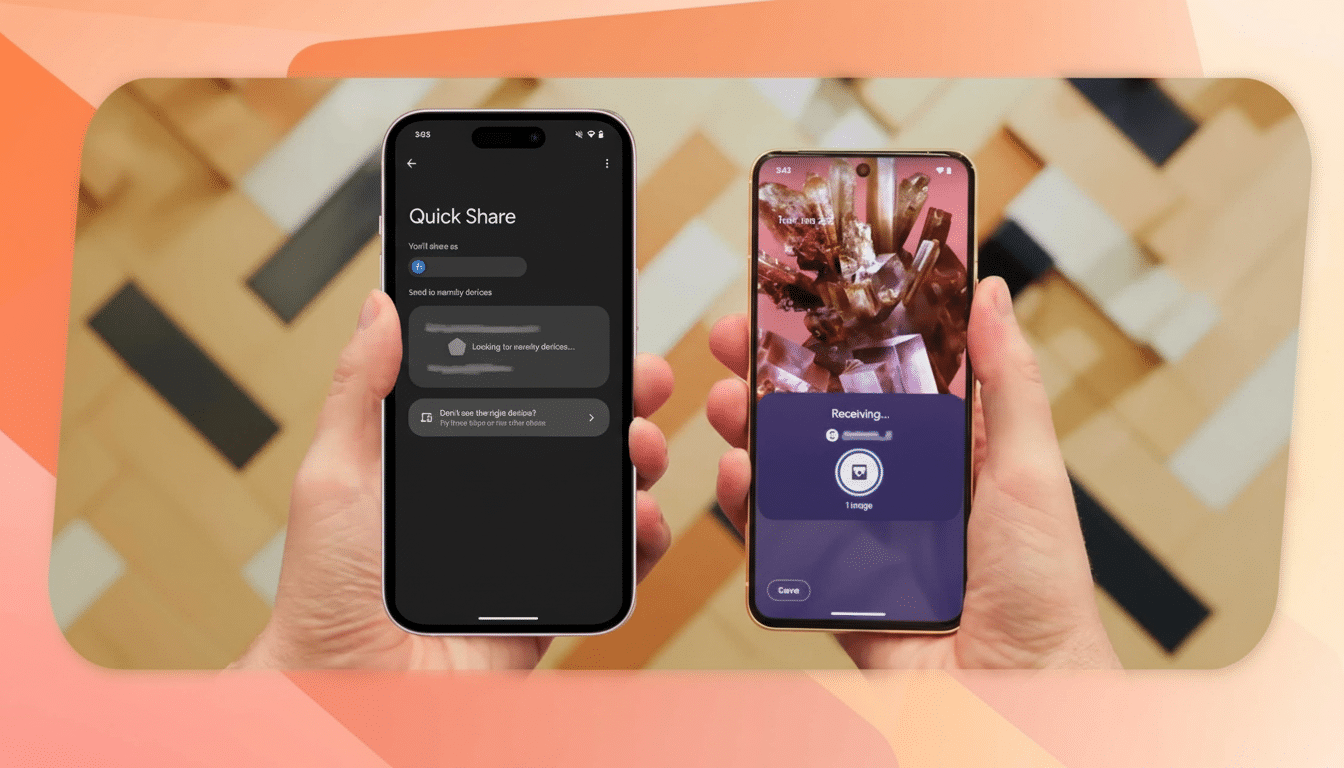Google’s cross-platform file sharing just got a big boost.
The built-in Android file-sharing feature, known as Quick Share, now works not just with iPhones but also with iPads and Macs using Apple’s AirDrop. It starts with the Pixel 10 series and bridges the gap between two competing ecosystems, reducing some of the friction that has plagued mixed-device homes and workspaces for generations.

What’s new in Quick Share’s AirDrop compatibility
Who can use it
Google has recently revised its Quick Share help text on Android to state that it is fully compatible with Apple’s AirDrop on iPhone, iPad and Mac. Crucially, the company says it built that interoperability itself — without support from Apple. At launch, sending from Android is limited to Pixel 10 devices, and the feature enables two-way transfers: Apple devices can send back to the Pixel as if it were another AirDrop target.
This matters because device ecosystems are more mixed now than they’ve ever been. Android holds about 70% of the global smartphone share, according to StatCounter, with iOS taking up most of what’s left. Globally, macOS remains in the mid-teens for desktops and laptops. Apple has also said it has more than 2 billion active devices. In other words, many people live in a world that’s a combination of Android phones, iPads and Macs — and have hoped for an easy, local, offline way to send files between them.
How to share between Pixel and Apple devices
On a Pixel 10, open Quick Share and change visibility to “Everyone for 10 minutes” or switch into Receive mode, then select the photo, video or document you want to send. Available Apple devices within your proximity that have AirDrop receiving enabled will display in the selection list. Choose the device, and the recipient will receive the standard AirDrop notification to accept or decline.
On iPhone, iPad or Mac: Make sure that AirDrop receiving is turned on. If you’re not in each other’s contacts, use the “Everyone for 10 minutes” setting to find the Pixel. You’ll find it there locally, just like a regular AirDrop transfer: photos in the Photos app, documents in Downloads, etc.
Google has not described the transport stack, but earlier work on AirDrop indicates that it uses Bluetooth for discovery and a peer‑to‑peer Wi‑Fi link for speed. In practice, this translates to fast local transfers that don’t use mobile data. You may still find that your luck will fluctuate depending on radio conditions, distance and interference from crowded networks.

Security and limitations to be aware of when sharing
Both platforms maintain control over visibility. On Pixel, the “Everyone for 10 minutes” option times out automatically to help reduce the potential for drive-by share attempts. On Apple devices, you can select Receiving Off, Contacts Only or Everyone for a period of 10 minutes. You’re always presented with an approval prompt before anything lands, and the device’s name can help you figure out who sent it.
Just like native AirDrop, transfers are encrypted between devices. Security researchers have already said that AirDrop’s contact discovery process can leak hashed identifiers in some cases, so you should probably err on the side of caution and use Contacts Only in public places. The same common-sense advice goes for Quick Share: only keep broad visibility on when you need it.
The only limiting factor right now is availability: you need a Pixel 10 to use AirDrop compatibility with it. Google has not shared any timing for older Pixels or other Android phones. Because of the way Google typically rolls out features, wider support is reasonable to assume — but until we know otherwise, organizations should plan around needing a Pixel 10.
Why this cross-platform bridge is important
For years, fast local sharing has been a competitive moat for Apple. Creative teams, classrooms and families also use AirDrop to send files and photos to one another across the room without a cable or storage service. Bringing that feeling to the Android world, and doing so without relying on third-party apps or awkward workarounds, removes friction exactly in the environments where mixed fleets are standard.
It also signals a larger trend. Google brought Nearby Share and Samsung’s own solution under the Quick Share name to bring local transfers of files to Android and ChromeOS. Now, by integrating with AirDrop, Quick Share becomes more useful in a world where platform boundaries are fluid. For businesses, it might shave minutes off routine workflows; for consumers, it turns any “just send it to me” request into a one-step action, regardless of what logo is on the lid.
Bottom line: what this AirDrop integration means now
Quick Share talking to AirDrop — hell has frozen over! Quick Share now talks to AirDrop on iPhones, Macs and iPads, a big step forward for everyday interoperability. It begins with the Pixel 10 series, features back-and-forth action, and uses the same prompts familiar to users concerned with privacy. If you live and work within a mixed ecosystem, this is a rare upgrade that saves time right away — and other signs point to the future of local sharing across platforms.

